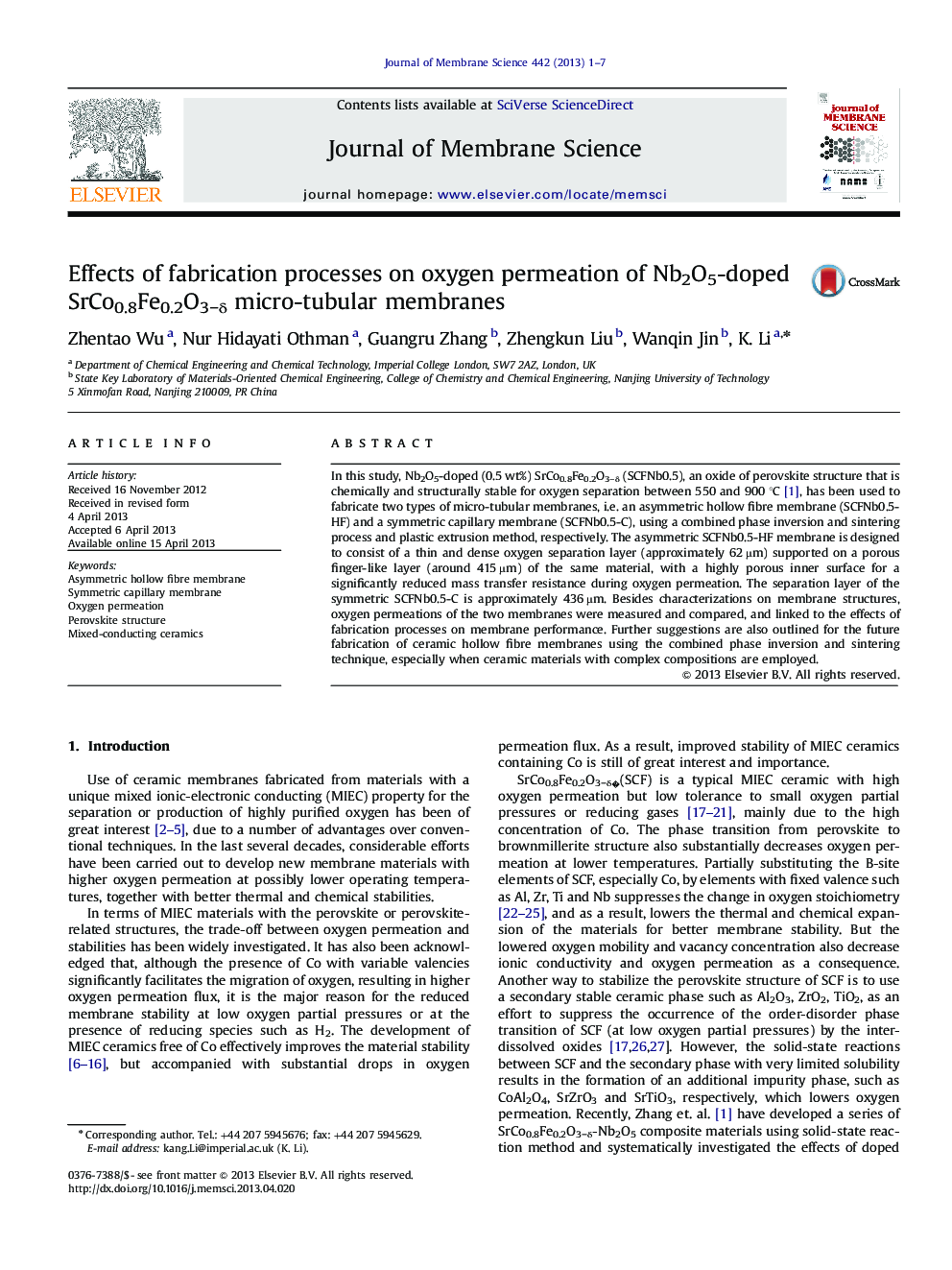| Article ID | Journal | Published Year | Pages | File Type |
|---|---|---|---|---|
| 634145 | Journal of Membrane Science | 2013 | 7 Pages |
Abstract
In this study, Nb2O5-doped (0.5 wt%) SrCo0.8Fe0.2O3âδ (SCFNb0.5), an oxide of perovskite structure that is chemically and structurally stable for oxygen separation between 550 and 900 °C [1], has been used to fabricate two types of micro-tubular membranes, i.e. an asymmetric hollow fibre membrane (SCFNb0.5-HF) and a symmetric capillary membrane (SCFNb0.5-C), using a combined phase inversion and sintering process and plastic extrusion method, respectively. The asymmetric SCFNb0.5-HF membrane is designed to consist of a thin and dense oxygen separation layer (approximately 62 µm) supported on a porous finger-like layer (around 415 µm) of the same material, with a highly porous inner surface for a significantly reduced mass transfer resistance during oxygen permeation. The separation layer of the symmetric SCFNb0.5-C is approximately 436 µm. Besides characterizations on membrane structures, oxygen permeations of the two membranes were measured and compared, and linked to the effects of fabrication processes on membrane performance. Further suggestions are also outlined for the future fabrication of ceramic hollow fibre membranes using the combined phase inversion and sintering technique, especially when ceramic materials with complex compositions are employed.
Related Topics
Physical Sciences and Engineering
Chemical Engineering
Filtration and Separation
Authors
Zhentao Wu, Nur Hidayati Othman, Guangru Zhang, Zhengkun Liu, Wanqin Jin, K. Li,
